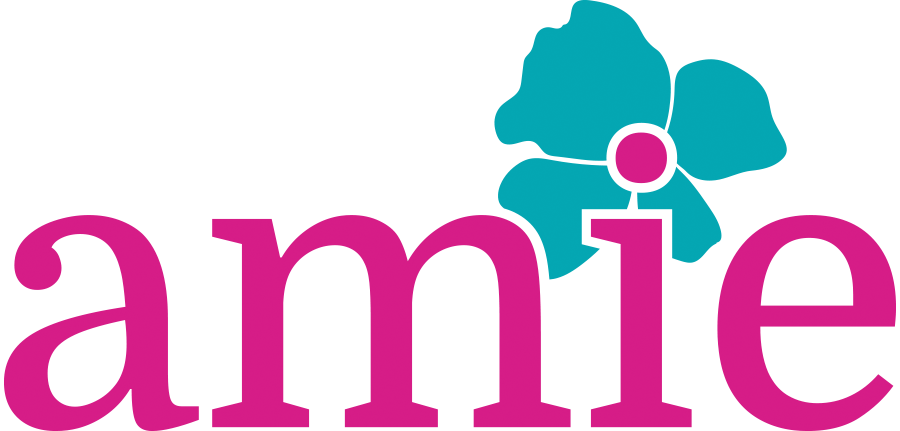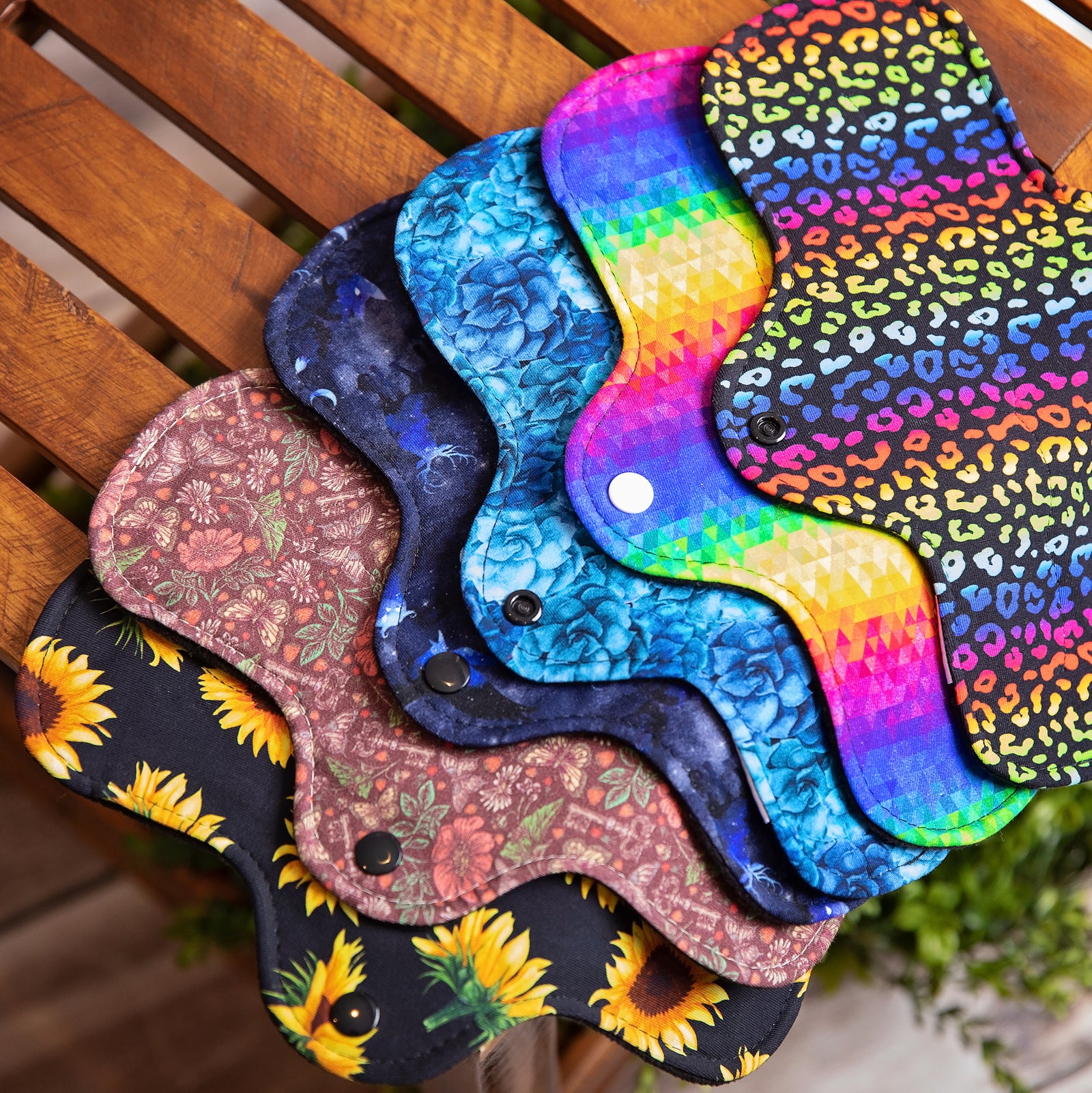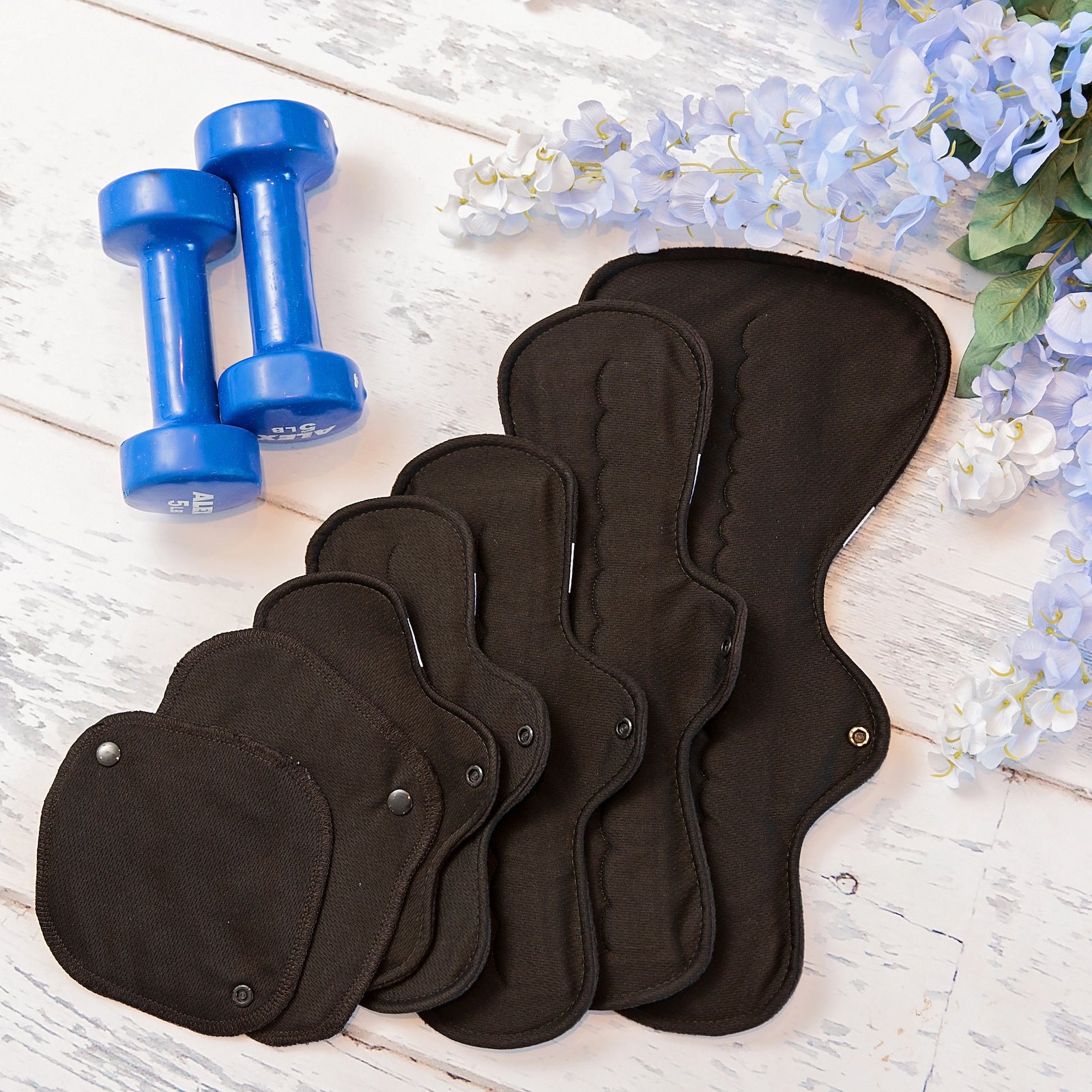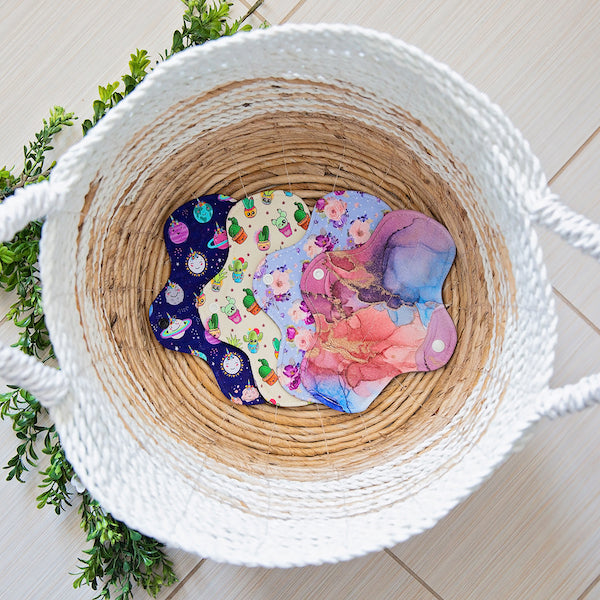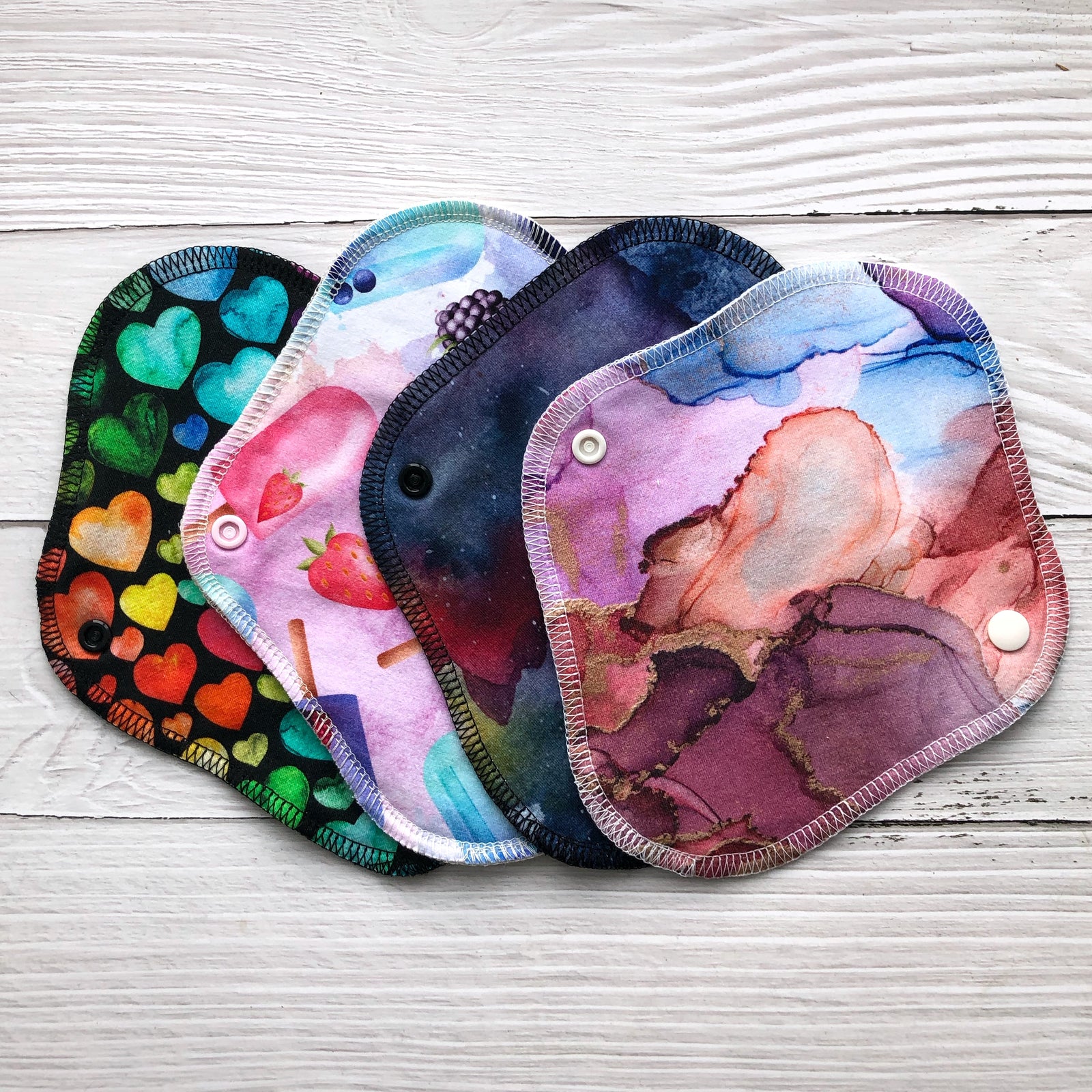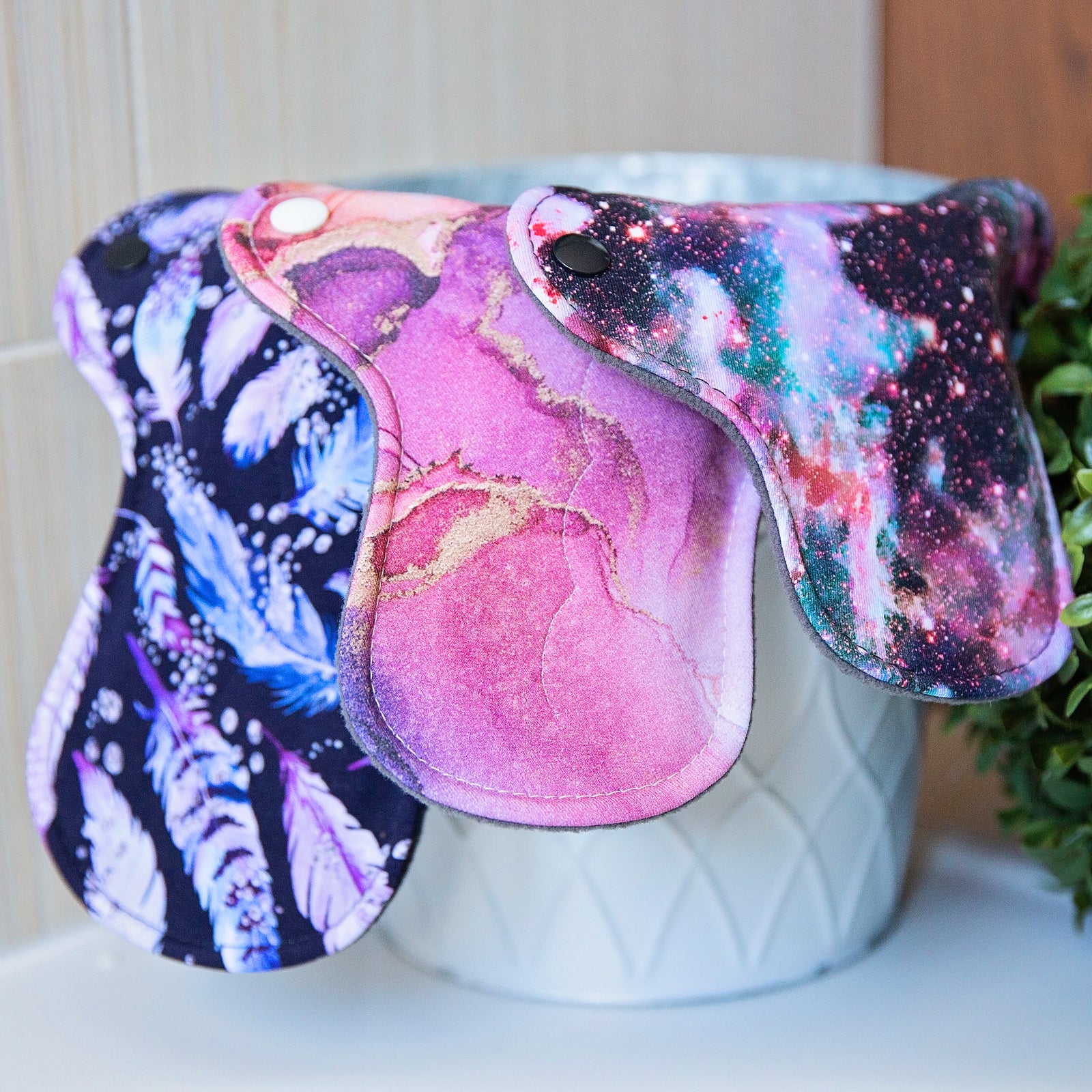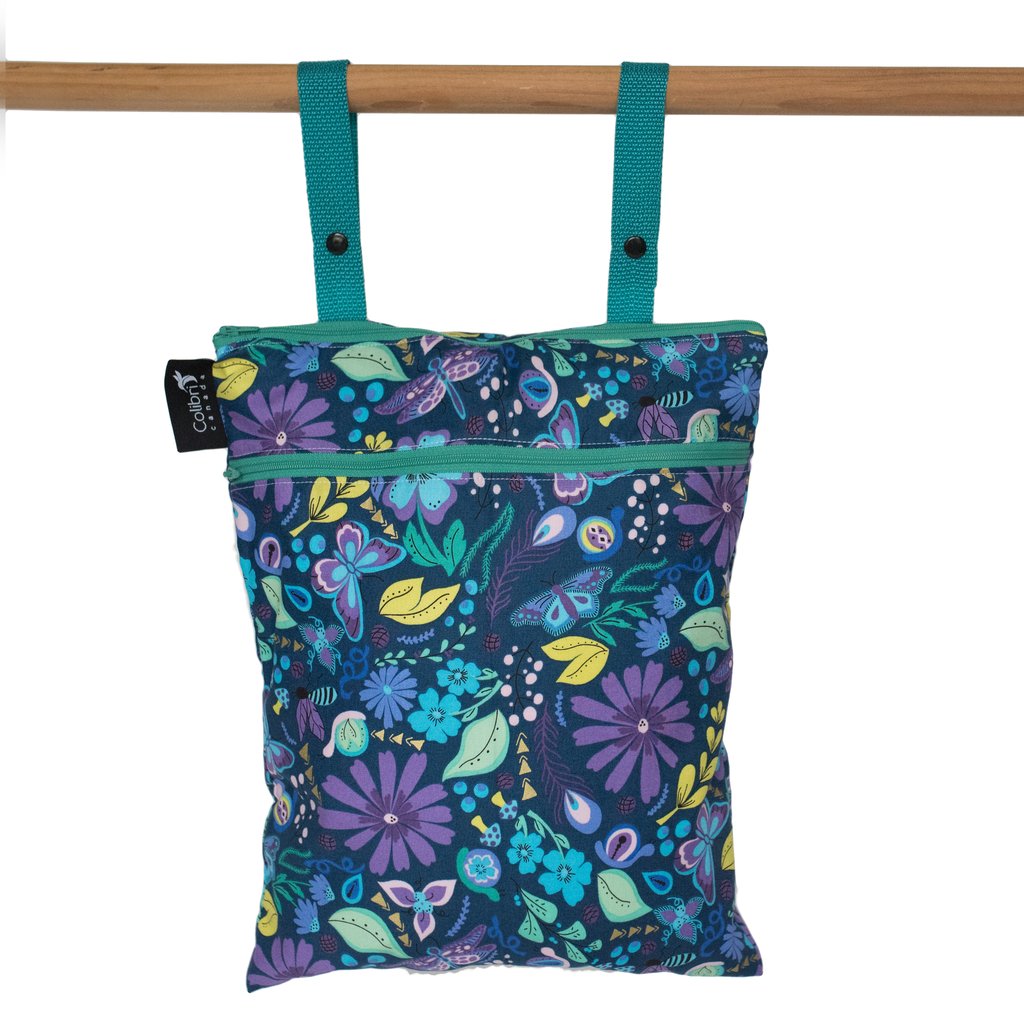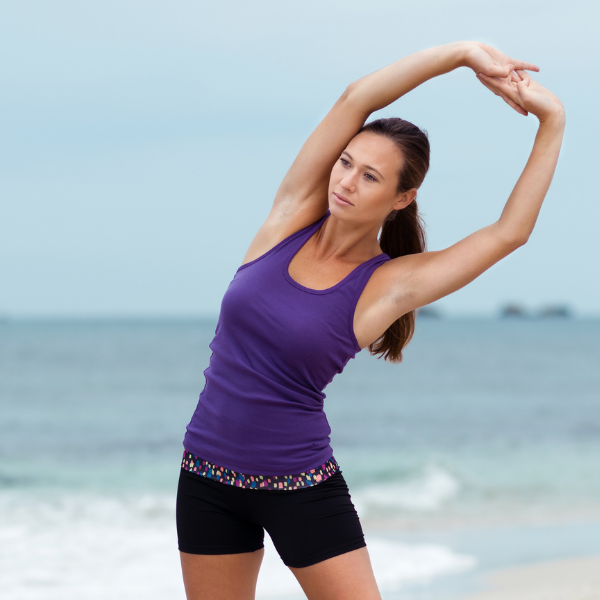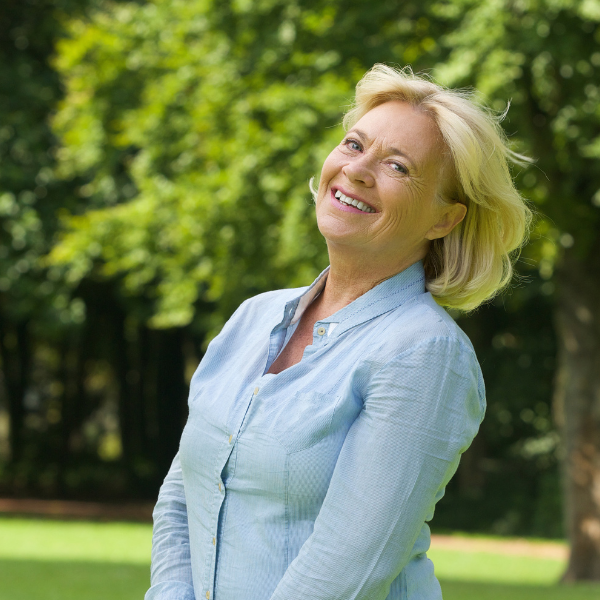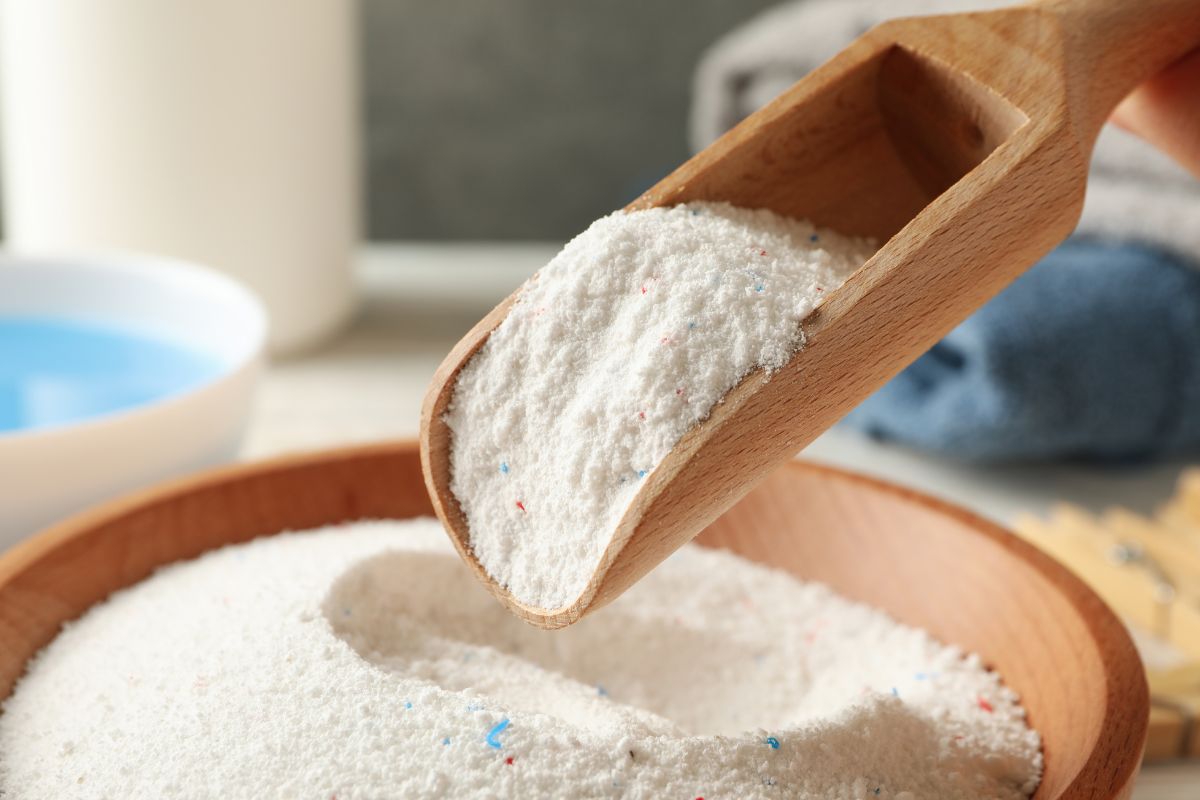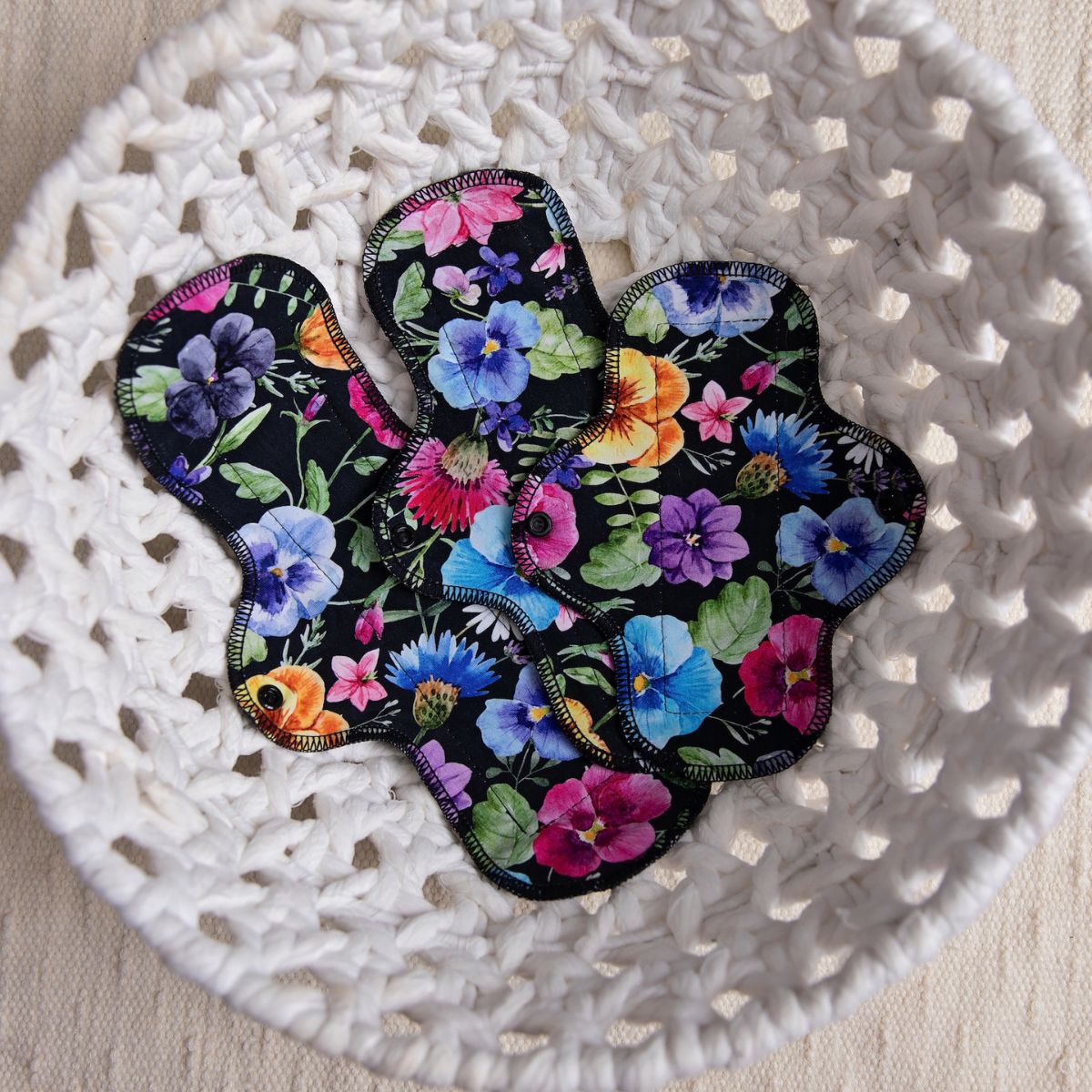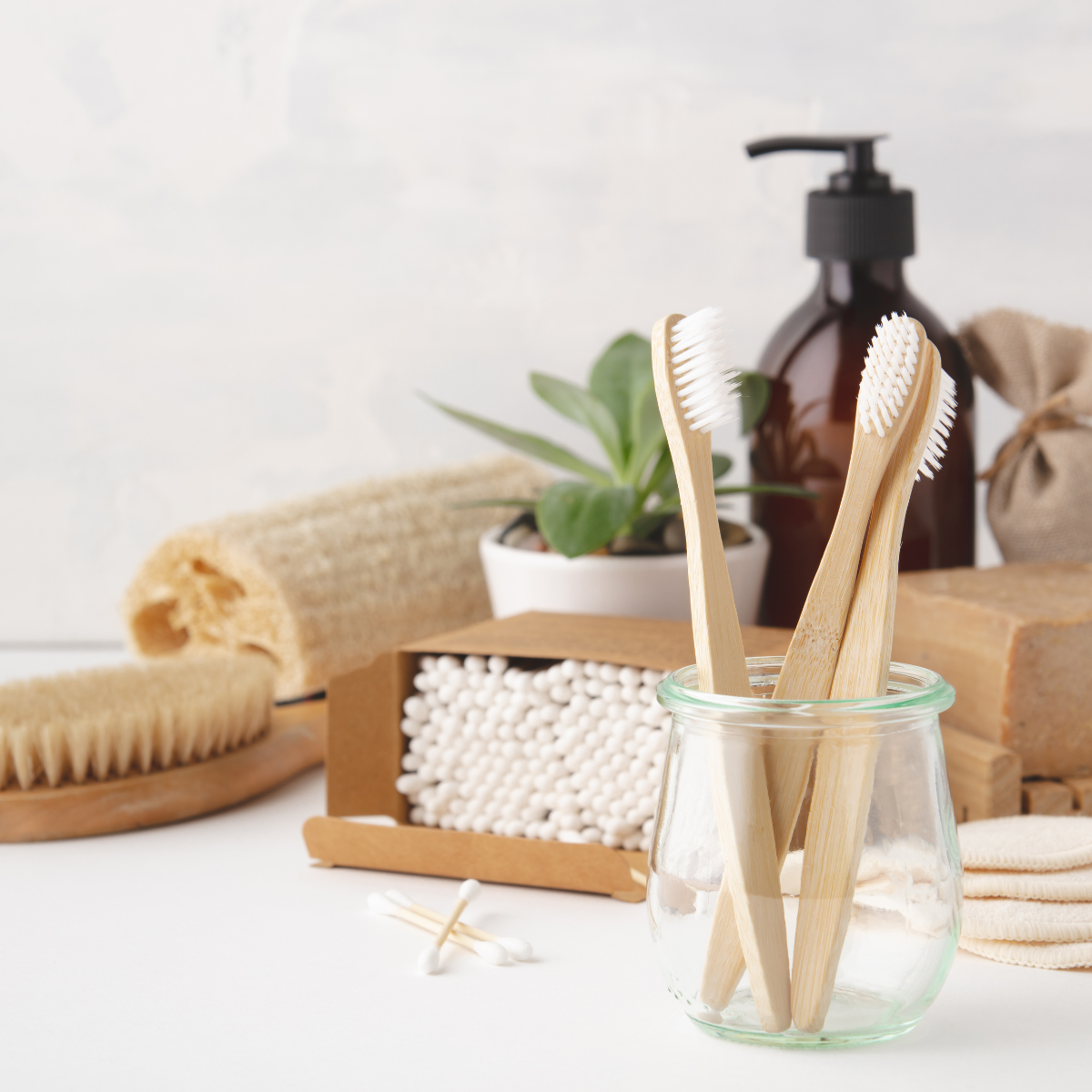It’s exciting to see more and more people embracing reusable pads as a sustainable and cost-effective alternative to disposable products. Not only are they good for your wallet, but they also drastically reduce landfill waste and our environmental footprint. Just like any other personal item, keeping your reusable pads clean and fresh is essential for hygiene and comfort. A key to achieving fresh and clean reusables? Choosing the right detergent! This guide will help you navigate the world of detergents and find the perfect one for your Amie pads, ensuring they stay clean, fresh, absorbent and last you for years to come.

One caveat…if you are a reusable pad user and your pads are consistently clean and fresh and have not suddenly started causing you problems, you don’t need to change a thing. You have permission to just be happy and go about your day and not try to fix something that isn’t broken!
If you are new to reusable pads, your pads aren’t coming as clean as you’d like, or your pads seem less absorbent than before, this guide to choosing the best detergent for reusable pads is for you. Let’s dive in!
Understanding Detergent Options
Detergents come in liquid, powder, concentrate, pods, strips and probably several other formats! You’ll also find detergents that smell like apple-mango, a beach on a summer day and ones that are scent-free. You’ll find detergents with whiteners, fabric softeners, bleach, ones made for cold washing, washing jeans, and ones with claims of being ‘green’. How to choose?!

How to Choose a Detergent:
What it is more important than the format of the detergent comes down to two things. A good detergent:
The honest truth is that almost any mainstream detergent will usually get your pads clean, so most often, you can just choose one you like. Here are are a few tips to keep in mind:
Choose a detergent with enzymes: don’t stress about this too much, as most mainstream detergents do contain enzymes. Enzymes, which can be artificial or naturally occurring (noted by “bio” or “plant-based” on the label), break down proteins, help get rid of stains and generally boost cleaning performance. They also allow you to effectively launder items in warm or cold water, whereas detergents without them need warm water to activate.
No Fabric Softener: Fabric Softener is a big no-no for reusable pads, as it works by coating the fibres, making the product feel softer. As the product builds up, absorbency is reduced, which is the exact opposite of what we’re going for with reusable pads

No Dryer Sheets: Dryer sheets have fabric softener, which we’ve just mentioned is definitely out

Choose detergent, not soap: Several boutique or green-brand laundry products are not actually detergent, but soap. Soap is awesome for your hands and for your dishes. But, soap will not clean your pads. It is a mild cleaning agent, which is not powerful enough to properly clean thicker absorbent materials. And, soap builds up in the fibres of the pad, which decreases absorbency, causing pads to be less and less clean, leading to odour issues.
Don’t use homemade ‘detergent’: If you make your own laundry soap, we are in awe of you! That’s amazing. The issue is that homemade laundry products are soap-based and for reusable pads, as we’ve mentioned above, soap will not cut it. If you’d like to learn more about soap vs detergent, we suggest checking out what these smart people have to say.

What about scents and dyes?
There are good reasons that people want to avoid these. You can certainly choose a good scent and dye-free detergent for your pads, but you don’t need to in order to get them clean.
What about soap nuts? Laundry strips? Concentrates?
Soap Nuts are a berry, which, when wet, will release saponin, a surfactant present in soap. While they are super-cool and, obviously, planet-friendly, they are not recommended because, like soap, they lack the cleaning power required to deep clean the fibres in reusable pads.
Laundry Strips: These are a new to the scene, eco-friendly detergent that comes in a concentrated strip. Many people find they do a surprisingly-good job on their regular laundry. However, we don’t recommend them for reusable pads, as they just aren’t powerful enough to get the deep fibres clean. So, save them for your clothing and use something more powerful when you have reusable pads in the wash load.
Concentrates: Most liquid laundry detergents (and shampoos, dish detergents, floor cleaners, mouthwash, and just about every other cleaning or personal care product!) has a bunch of water added so the product will have more bulk and appears to be a better value. Several companies are beginning to offer concentrated cleaning and personal care products that have all the added water removed, which you can easily add at home (or your washer can add for you when it washes your stuff!). As long as the concentrated detergent meets our standards here for good cleaning power (a true detergent, preferably with enzymes, not soap) and will not cause build-up (no fabric softener), go for it.
Is detergent X/Y/Z a good one?
Again, most mainstream detergents will get your pads clean. However, if you'd like a little more guidance, you might check out the detergent index at Fluff Love University. While this is a site dedicated to washing cloth diapers, and we obviously aren't doing that, the principles (of getting absorbent fibres clean and avoiding build up) are the same. The list is not exhaustive and is a number of years old, but still quite relevant.
What if I have hard water?

There is no getting around that hard water messes with laundry. The minerals build up on fibres, leaving clothing dingy and extra rinses only exacerbate the problem. If you have untreated hard water, your best bet with your reusable pad laundry (and your regular laundry) is to add a water softener of some kind. You will add this to the drum, not to the softener compartment, which is for fabric softener (which, as you remember we aren’t using!). Several popular water softeners include Calgon, washing soda (different from baking soda) and borax.
What about if I’ve already used fabric softener/soap/something that has built up in my pads?
That’s okay. We’ll help you undo it. You will need to do a process called 'stripping'. Add 1 tsp each of borax, washing soda and Calgon to a gallon of hot water. Stir to dissolve and add clean pads, soaking for a few hours or overnight. Wash in cold water without detergent and then do a bleach soak. Using a disinfecting bleach which has 5.25% sodium hypochlorite. Add 1 Tablespoon bleach to 1 gallon of cold water. Soak for 30 minutes and rinse with hot water, then wash and dry as usual. (Bleach soaks are also recommended to sanitize your pads if you have used them while you had a yeast infection.)

What if I have more questions about washing my reusable pads?
You might find one or all of these blog articles helpful:
- How to Wash Reusable Pads
- How to Handwash Your Reusable Pads
- Other Ways to Wash Reusable Pads
- Troubleshooting Your Reusable Pads
Choosing the right detergent is a crucial part of caring for your reusable pads and ensuring a comfortable experience. By following the tips in this guide, you can find an effective detergent that keeps your Amie pads clean, fresh, and odour-free. With proper care and cleaning, they’ll be clean, effective and comfy for years to come. So ditch the disposable products, embrace reusables, and feel great about yourself and the planet!
